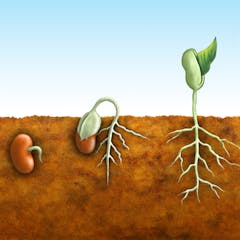
Articles on Curious Kids
Displaying 521 - 540 of 679 articles

In the space of a few short years, deaf Nicaraguan school children created their own language. This example may give us a clue about how spoken language developed over thousands of years.

There are many reasons to be careful when there’s a big storm. But there are also ways you can protect yourself to avoid lightning.

This is the story of how seeds came together bit-by-bit over a really long time, as plants evolved.

While making small volumes of pure water in a lab is possible, it’s not practical. The reaction is expensive, releases lots of energy, and can cause really massive explosions.

Believe it or not, I have studied the hairy legs of spiders for years and can give you some definitive answers on this.

Your tongue, saliva and nose work together to help you taste your food.

The reason we have seasons is because, during its journey around the Sun, the Earth is tilted.

Life could exist in another solar system in a different part our galaxy. Or in another galaxy far away. We don’t have the perfect technology yet to study such far away places but we’re still trying.

When it comes to their own “voices”, studies show that cats and dogs use different vocal signals to communicate different messages.

Everything you can touch is made of molecules – but feelings, sound and light are something different.

Ants have something similar to blood, but it’s called haemolymph. Some insects use it in unusual ways. When threatened by a predator, blister beetles can squirt haemolymph from their knees.

Travel can come with danger, so dogs have mostly evolved to avoid being over-adventurous. That said, dogs may see some kinds of travel as a chance to find things they want – like food or a mate.

From about age seven, Spartan children learned to fight and practise obeying orders. They also staged pretend battles. Boys and girls were trained separately.

Our eyes don’t grow much at all – but when we’re very young, we still need to learn how to see.

When I was little, geologists worked out Earth’s surface was made of pieces, like a giant puzzle. Those pieces, called “tectonic plates”, move and bump into each other and mountains form.

Hydrogen peroxide is a chemical that can kill germs. It is found in two things many ants love to eat: nectar and honey dew.

At the end of the day, the problem is that no-one on Earth wants nuclear waste stored near them, and it’s not safe or cost-effective to blast it into space.

Whatever your age, whatever your favourite topic – space, animals, nature, physics, how bodies work – we’ve got a Curious Kids article for you.

Some colour blind people only have two kinds of cone cell in their eye. Others have three kinds, but the cones do not pick up the same light waves as the cone cells in most people’s eyes do.

When poorer countries print more money, it doesn’t make them richer – it just means people need more money to buy the same things.





